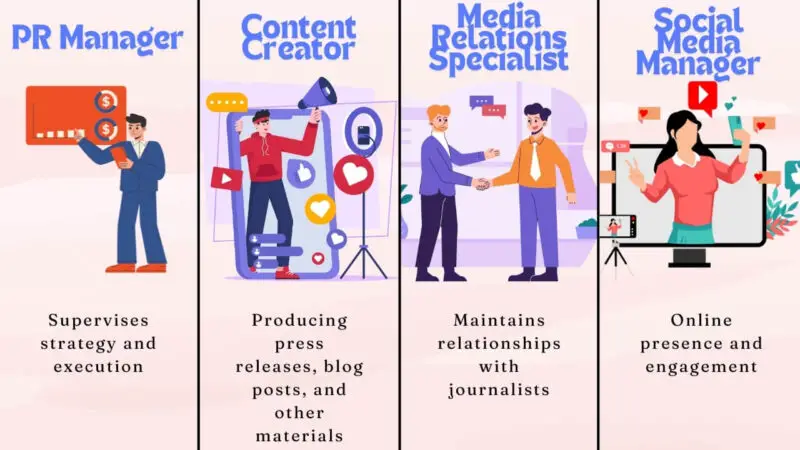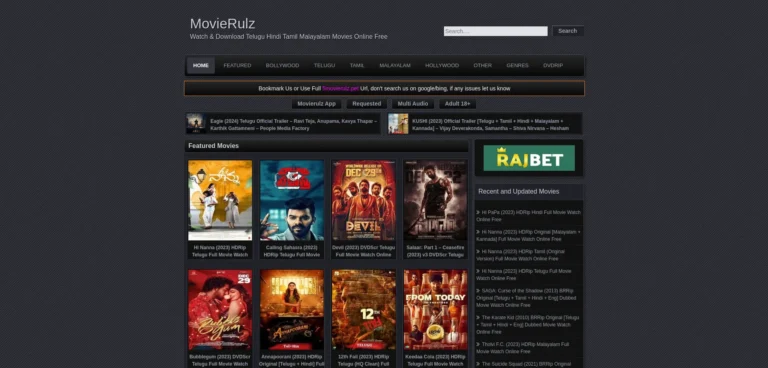Public Relations (PR) is crucial for startups aiming to build brand recognition and trust.
However, making a competent PR team requires conducting thorough research until you find team members who can undertake all the processes properly.
Today, I will talk about how to build an efficient team and what you should know regarding the processes that follow.
Table of Contents
ToggleBuilding Your PR Team

Deciding between an in-house PR team and hiring an agency is a crucial step.
In-house teams offer more control and deep company knowledge, while agencies provide broader expertise and media connections.
Key roles in a PR team include:
- PR Manager, who oversees strategy and execution.
- Content Creator, responsible for producing press releases, blog posts, and other materials.
- Media Relations Specialist, who builds and maintains relationships with journalists.
- Social Media Manager, who handles online presence and engagement.
Each role requires specific skills and qualifications:
- A PR Manager should have strong leadership and strategic thinking abilities.
- Content Creators need excellent writing skills and creativity.
- Media Relations Specialists must be adept at communication and relationship-building.
- Social Media Managers should be proficient in digital marketing and analytics.
Developing a PR Strategy

Developing a robust PR strategy is fundamental for any startup. The first step is to define clear objectives using SMART goals.
Smart stands for:
- Specific
- Measurable
- Achievable
- Relevant
- Time-bound
These goals help in setting a clear direction and measuring success.
Next, identifying your target audience is critical. Understand the demographics, interests, and behaviors of your potential customers.
This information will guide your messaging and the channels you use.
For example, younger audiences might prefer social media platforms like Instagram and TikTok, while professionals might be more accessible through LinkedIn and industry publications.
Preferred media channels play a significant role in how effectively you reach your audience.
Knowing whether your audience prefers traditional media, digital media, or social media will help you allocate resources efficiently.
A well-defined target audience ensures your PR efforts are not wasted and resonate with those who matter most to your business.
PR Tools and Tactics

Effective PR tools and tactics are essential for executing your strategy.
Press releases are fundamental, and knowing how to write an effective one is crucial.
A well-crafted press release is clear, concise, and newsworthy, often following a specific format that includes a compelling headline, a succinct lead paragraph, and relevant details.
Media kits, which include company information, press releases, images, and other media assets, are essential components for engaging journalists.
Creating an engaging media kit involves compiling all necessary information in a visually appealing and easily accessible format.
Building relationships with journalists through personalized PR pitches increases the chances of your story being covered.
Influencer marketing involves identifying and collaborating with influencers who can help promote your brand.
Effective strategies for influencer collaboration include finding the right influencers whose audience aligns with your target market and developing mutually beneficial relationships. Social media strategies are vital for maintaining an online presence.
Choosing the right platforms based on where your audience spends their time, and creating a content calendar for consistent posting and engagement, are key to successful social media PR.
Executing Your PR Strategy

Executing your PR strategy involves creating a PR calendar to plan and schedule activities.
Utilizing different PR channels ensures a broad reach such as:
- Traditional media (newspapers, magazines, TV)
- Digital media (blogs, social media, podcasts)
Industry events and conferences provide opportunities to network and showcase your brand.
Leveraging industry research and thought leadership, such as conducting and sharing research, writing guest blogs, and participating in interviews, establishes your startup as an authority in your field.
A well-planned execution phase includes a mix of activities that keep your brand in the public eye and position you as a leader in your industry.
Regularly updating your PR calendar and adjusting your tactics based on feedback and results will keep your strategy effective and dynamic.
Measuring PR Success
Measuring PR success is critical to understanding the impact of your efforts.
Key Performance Indicators (KPIs) such as media mentions, audience reach, engagement rates, and website traffic provide insights into your PR performance.
Tools for tracking and analysis, like media monitoring tools and analytics platforms, help you gather data and assess the effectiveness of your campaigns.
Media monitoring tools track mentions of your brand across various media channels, while analytics platforms analyze website traffic, social media engagement, and other relevant metrics.
Adjusting strategies based on metrics ensures continuous improvement.
If certain tactics are not yielding the desired results, refine your approach based on the data.
Regular analysis and adjustments keep your PR strategy aligned with your goals and responsive to changing market conditions.
Managing Crises
Identifying potential crises before they occur allows for proactive management.
Common PR crises include negative publicity, product failures, or scandals involving company personnel.
Developing a crisis communication plan is essential.
This plan should outline the steps to take when a crisis arises, including:
- Identifying a spokesperson
- Drafting holding statements
- Establishing internal communication protocols
Best practices for crisis management involve responding quickly and transparently.
Address the issue head-on, provide accurate information, and keep all stakeholders informed. A well-handled crisis can mitigate damage to your brand and even enhance your reputation if managed effectively.
In Conclusion
Building a strong PR strategy for startups involves careful planning, assembling a skilled team, utilizing effective tools and tactics, and continuously measuring and adjusting your efforts.
By having a mapped road to making a good team, you can ensure the quality that will resemble your brand’s needs and preferences.
Related Posts:
- The Role of SEO in Building a Strong Startup Brand
- AI-Powered TechWolf Raises $43M for Internal Talent…
- What Is One Way to Begin Saving Startup Capital?…
- Startup's Guide to Venture Capital Funding - How To…
- From Idea to Prototype - A Step-by-Step Guide
- Ultimate Guide to Competitive PPC Analysis for Startups










